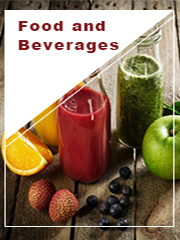Report overview
Instant coffee, also called soluble coffee, coffee crystals, and coffee powder, is a beverage derived from brewed coffee beans that enables people to quickly prepare hot coffee by adding hot water to the powder or crystals and stirring. Instant coffee is commercially prepared by either freeze-drying or spray drying, after which it can be rehydrated. Instant coffee in a concentrated liquid form is also manufactured.
This report aims to provide a comprehensive presentation of the global market for Instant Coffee, with both quantitative and qualitative analysis, to help readers develop business/growth strategies, assess the market competitive situation, analyze their position in the current marketplace, and make informed business decisions regarding Instant Coffee. This report contains market size and forecasts of Instant Coffee in global, including the following market information:
Global Instant Coffee Market Revenue, 2018-2023, 2024-2029, ($ millions)
Global Instant Coffee Market Sales, 2018-2023, 2024-2029, (K MT)
Global top five Instant Coffee companies in 2022 (%)
The global Instant Coffee market was valued at US$ 28840 million in 2022 and is projected to reach US$ 38250 million by 2029, at a CAGR of 4.1% during the forecast period. The influence of COVID-19 and the Russia-Ukraine War were considered while estimating market sizes.
Global Instant Coffee key players include Nestle, JDE, The Kraft Heinz, Tata Global Beverages, Unilever, etc. Global top five manufacturers hold a share over 50%.
Asia-Pacific is the largest market, with a share over 40%, followed by South America and North America, both have a share over 30% percent.
In terms of product, Spray-drying is the largest segment, with a share over 60%. And in terms of application, the largest application is Supermarket, followed by Online Sales.
We surveyed the Instant Coffee manufacturers, suppliers, distributors and industry experts on this industry, involving the sales, revenue, demand, price change, product type, recent development and plan, industry trends, drivers, challenges, obstacles, and potential risks.
Total Market by Segment:
Global Instant Coffee Market, by Type, 2018-2023, 2024-2029 ($ Millions) & (K MT)
Global Instant Coffee Market Segment Percentages, by Type, 2022 (%)
Spray-drying
Freeze-drying
Global Instant Coffee Market, by Sales Channel, 2018-2023, 2024-2029 ($ Millions) & (K MT)
Global Instant Coffee Market Segment Percentages, by Sales Channel, 2022 (%)
Supermarket
Online Sales
Others
Global Instant Coffee Market, By Region and Country, 2018-2023, 2024-2029 ($ Millions) & (K MT)
Global Instant Coffee Market Segment Percentages, By Region and Country, 2022 (%)
North America
US
Canada
Mexico
Europe
Germany
France
U.K.
Italy
Russia
Nordic Countries
Benelux
Rest of Europe
Asia
China
Japan
South Korea
Southeast Asia
India
Rest of Asia
South America
Brazil
Argentina
Rest of South America
Middle East & Africa
Turkey
Israel
Saudi Arabia
UAE
Rest of Middle East & Africa
Competitor Analysis
The report also provides analysis of leading market participants including:
Key companies Instant Coffee revenues in global market, 2018-2023 (Estimated), ($ millions)
Key companies Instant Coffee revenues share in global market, 2022 (%)
Key companies Instant Coffee sales in global market, 2018-2023 (Estimated), (K MT)
Key companies Instant Coffee sales share in global market, 2022 (%)
Further, the report presents profiles of competitors in the market, key players include:
Nestle
JDE
The Kraft Heinz
Tata Global Beverages
Unilever
Tchibo Coffee
Starbucks
Power Root
Smucker
Vinacafe
Trung Nguyen
Outline of Major Chapters:
Chapter 1: Introduces the definition of Instant Coffee, market overview.
Chapter 2: Global Instant Coffee market size in revenue and volume.
Chapter 3: Detailed analysis of Instant Coffee manufacturers competitive landscape, price, sales and revenue market share, latest development plan, merger, and acquisition information, etc.
Chapter 4: Provides the analysis of various market segments by type, covering the market size and development potential of each market segment, to help readers find the blue ocean market in different market segments.
Chapter 5: Provides the analysis of various market segments by sales channel, covering the market size and development potential of each market segment, to help readers find the blue ocean market in different downstream markets.
Chapter 6: Sales of Instant Coffee in regional level and country level. It provides a quantitative analysis of the market size and development potential of each region and its main countries and introduces the market development, future development prospects, market space of each country in the world.
Chapter 7: Provides profiles of key players, introducing the basic situation of the main companies in the market in detail, including product sales, revenue, price, gross margin, product introduction, recent development, etc.
Chapter 8: Global Instant Coffee capacity by region & country.
Chapter 9: Introduces the market dynamics, latest developments of the market, the driving factors and restrictive factors of the market, the challenges and risks faced by manufacturers in the industry, and the analysis of relevant policies in the industry.
Chapter 10: Analysis of industrial chain, including the upstream and downstream of the industry.
Chapter 11: The main points and conclusions of the report.
